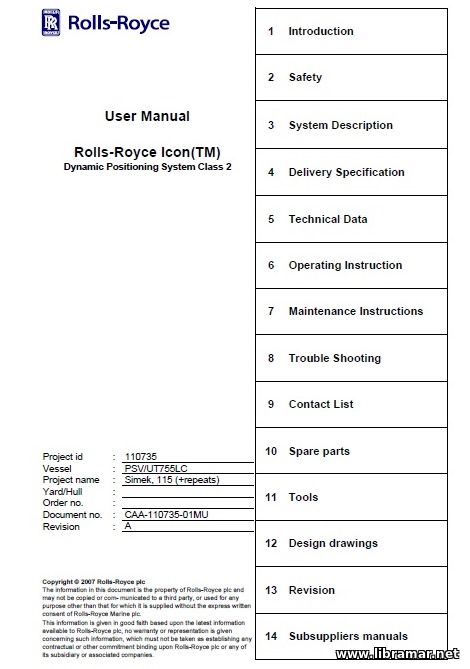Offshore People and Safety

Less than five percent of rig accidents are caused by mechanical failure. People make safe operations. It is extremely important for everyone to develop a sense for safety and to practice self-improvement. Before acting, an individual must automatically consider ”will this put anyone in danger?”. Every crew member must be ever alert to risky or unsafe situations. Being alert is the best way to avoid injury to yourself and the crew. It is critical that a new crew member receives supervision and instruction in safe operating procedures immediately upon reporting for work. Industry data show that sixty percent, or more, of rig injuries involve people on the job less than six months. Even the experienced person may need supervision, especially if coming from a different type or size or rig.
Operator
Responsibility for the rig safety follows the corporate chain of command. All are involved; from the operator down to the new floorman.
Depending on the contract, an operator may specify the casing and mud programs to be followed, finish the casing, have it delivered, inspected, and specify the setting depth. If operators furnish the mud, they will control the type and weight and be responsible for having ample supplies on location, or nearby, to control the formation pressures encountered. Such matters are usually covered in the drilling contract. An operator must select a contactor with a rig capable of safely handling the job. The superintendent, field foreman, or consulting drilling engineer may be on location at crucial times and be in direct control of operations. At such times the operator is effectively in charge of seeing that the work is performed without endangering the crew, equipment, or well.
Drilling Contractor or Rig Owner
A contractor has the primary responsibility for safe drilling operations. The rig owner determines the safety policy and instructs  the various supervisors to implement that policy, showing a genuine interest and actively participating in developing all aspects of the company’s safety programs. The rig’s safety record should be as important as performance. A good contractor will never allow cost-cutting measures to compromise crew safety. The contractor has a responsibility to the rig crew and to the client to provide safe drilling equipment. All equipment should be properly sized to safely handle expected load limits, pressures, and depth. All needed safeguards should be in place and meet, or exceed, applicable regulatory standards.
the various supervisors to implement that policy, showing a genuine interest and actively participating in developing all aspects of the company’s safety programs. The rig’s safety record should be as important as performance. A good contractor will never allow cost-cutting measures to compromise crew safety. The contractor has a responsibility to the rig crew and to the client to provide safe drilling equipment. All equipment should be properly sized to safely handle expected load limits, pressures, and depth. All needed safeguards should be in place and meet, or exceed, applicable regulatory standards.
The contractor should be aware of, and in compliance with, all governmental regulations pertaining to drilling operations including permit requirements for certain jobs performed by the crew. Responsibility for safety training is given to the drilling superintendent, rig managers, and drillers. They in turn ensure that all personnel under their supervision participate in safety training and education. To underscore their interest in safe operations, some contractors provide safety bonuses, shared by crew and supervisors, after completion of a well.
Most multi-rig contractors have a safety engineer or director charged with the responsibility of overall safety matters. Usually safety personnel report directly to the company president or owner. Should an accident occur, they conduct a thorough investigation, prepare all reports and develop procedures to avoid a reoccurrence of the incident. At the direction of the owner, the safety director may implement a job safety analysis (JSA) program enlisting support and input from all personnel in order to achieve a safe work site.
Drilling Superintendent
Drilling superintendents, or managers, are in top management positions and usually report directly to the owner or company president. A superintendent may be in charge of the overall operations of several rigs, including the performance of the rig managers, drillers, crewmen, subcontractors, service company vendors, and other field personnel. The superintendent is in contact with the operator’s management both before and during drilling, and learns the capabilities of all the rigs and crews under supervision. Other aspects of the job may be to draw up the drilling contact or assure the client that the assigned crew can do the job safely and efficiently.
 The superintendent works with the rig managers to see that the equipment and location are rigged up safely. Usual conditions at the locations are dealt with properly. Rig managers are informed on any changes in safety procedures or equipment on the rig and are required to conduct safety training for the crew. Training will include periodic rig inspections meant to spot potentially hazardous conditions and insure that such conditions are eliminated. Rig managers also deal with service companies, consultants, equipment engineers, and others working to improve rig performance and safety.
The superintendent works with the rig managers to see that the equipment and location are rigged up safely. Usual conditions at the locations are dealt with properly. Rig managers are informed on any changes in safety procedures or equipment on the rig and are required to conduct safety training for the crew. Training will include periodic rig inspections meant to spot potentially hazardous conditions and insure that such conditions are eliminated. Rig managers also deal with service companies, consultants, equipment engineers, and others working to improve rig performance and safety.
The "Read Later" function allows you to add material to this block with just one click. Just click on the icon and read the articles that interest you at any convenient time.


